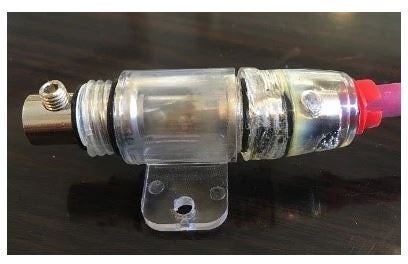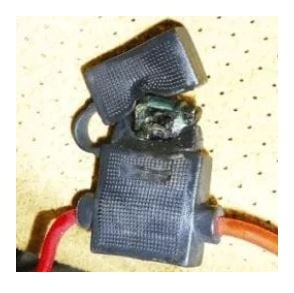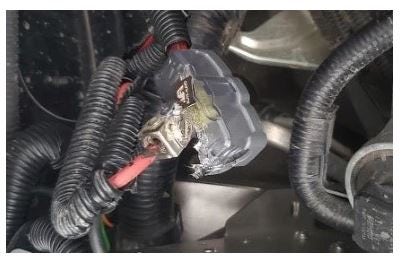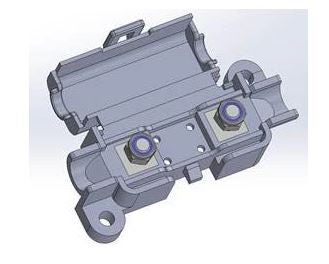When charging an auxiliary battery, our BCDC In-Vehicle Chargers deliver charging currents in excess of 25Amps for sustained periods of time. Within this charging circuit, the charger, fuse/holders, and associated connections are going to be stressed and, if not adequately cabled and connected, could lead to an excessive increase in circuit resistance, temperatures and reduced performance.


Combining an inadequate installation procedure with less than perfect environmental challenges as experienced with high under-hood temperatures, enclosed mounting positions onto non-metal surfaces with limited air flow, weak spots are likely to appear with sometimes catastrophic results.
From our experience, fuses are certainly the weakest link and often overlooked as being crucial to product performance. A poorly chosen fuse design or application can play a critical part in a product not functioning as expected.


Take, for example, a push-in blade-style fuse holder/fuse, the connection surface area provided to transfer the constant 25 – 50Amp high current, is only a crimp-style push-on connection at best. Something similar can be experienced with spring loaded style fuse holders and this lack of connection surface area & tension is a cause of concern.
The constant high current passing across an inadequate connection point is going to create excessive heat which will result in a higher point of resistance, causing this poor connection to melt, leading to an open circuit, no charging, flat batteries and spoilt food and in extreme circumstances, fire!


Whilst crimping these high current carrying circuits may be okay, if suitably rated lugs and connectors are used, additional soldering of these electrical connections assist with forming a bond so strong the surfaces become one. Additional insulation (i.e. heat shrink), tubing and electrical tape will prevent any short circuit contact with the vehicle chassis and/or body negative ground points and surfaces.
This is valid for any mobile in-vehicle DC/DC battery charging application, that’s why REDARC recommends the use of a suitably rated, quality MIDI style-bolt-down fuse holder and fuse for these circuits. When installed correctly, these MIDI fuses provide the least resistance and adequate connection surface area required to handle the constant current associated with battery charging circuits.


For more information on 12V battery charging check out our blog on building a 12V power system for extended travel or use our vehicle selector tool to find the perfect setup for your vehicle.
